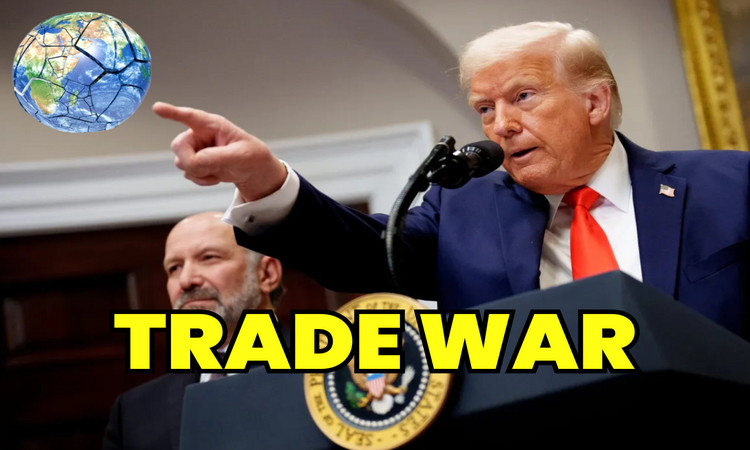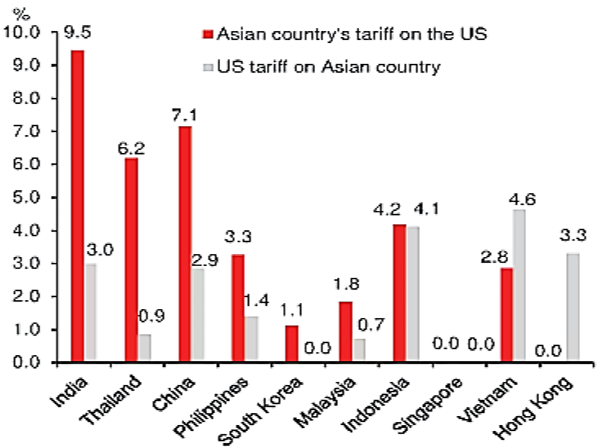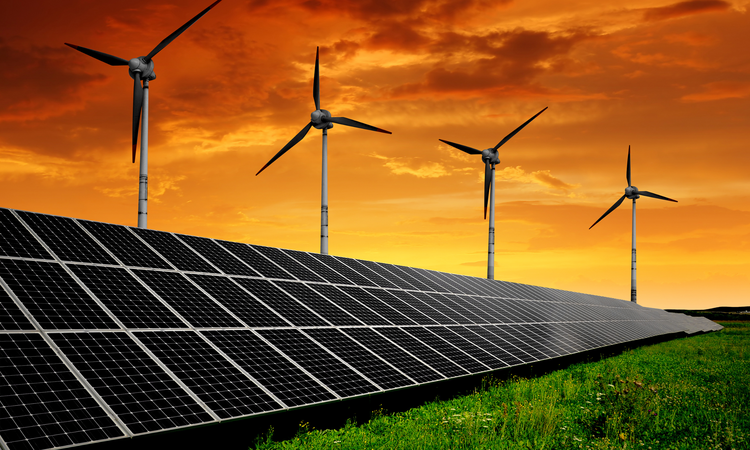
President Trump's return did not turn out to be as "rejoice-able" an incident as was expected. Among the various measures that he has taken to bring down the "national debt", one is the imposition of TARIFF. While this is amongst the most talked about topic when it comes to discussing the "US Actions", a lay man is seldom well-informed about how it makes any difference to India and to us.
To understand tariff let's first try to understand what international trade is and how it happens between countries. In modern parlance, trade is simply an exchange of goods and / or services for money between two entities. What I need I buy from someone and pay in terms of cash (when paid in kind it's the barter system). The same concept is applied when it comes to trade between countries.
No country is completely self-sufficient – we buy what we need or produce in lower quantities than what is needed by the domestic consumers and sell whatever we don't need or is produced in larger quantities than we need at home. So excess demand leads to imports and excess supply to exports. We are simplifying the concept for the purpose of explaining. There are several nitty-gritties … but let's not go there.
When you are buying from or selling something to someone in India you use Rupee - the Indian currency. But in the international market you can't buy or sell in exchange for Indian currency unless there is an explicit agreement between the buyer and the seller. Generally, the currency used would be the US Dollar, or Euro or any other widely accepted currency depending upon the region. You price it in terms of Indian currency but convert it to the currency accepted and then the exchange happens. Say you want to sell something priced at ₹1,000 per piece. But when you sell it in the US, it will be priced at US$ 11.45 per piece following the INR-USD exchange rate of ₹87.30 per US$ (US$ 1 costs ₹87.30 as of 12.50 pm on 11 Mar, 2025).
Generally, unless there is a free trade agreement (FTA) a country would not be able to sell in another country at a price that it decides. The consumer country usually will impose a tax or duty on the products and services that it imports. This is called a Tariff and it makes the imported good costlier than home-made similar products. While protecting domestic manufacturers of the same product a tariff also generates revenue for the government and discourages over spending of imports.
Now, if a country imports more than it exports, it runs into a trade deficit – pays more than it earns. The statistics of the Office of the U.S. Trade Representative show that the goods trade deficit with India was $45.7 billion in 2024, which is a 5.4% increase from 2023 (Kumar, 2025). To reduce this deficit countries, impose tariff on imports. But the trading partners can also impose tariffs in turn which will make exports costlier too. This will discourage exports by bringing down demand, again widening the gap.
Just like price cuts from a participant in any industry invites price cuts by its rivals in response leading to a price war, a tariff imposed by one country invites retaliatory tariff or reciprocal tariff from its trading partners thus ushering in and subsequetly fuelling a trade war.
Look at the following news headlines…
- Trump to impose tariffs on products not made in the United States -
- Ontario imposes 25% surcharge on US-bound electricity in retaliation to US tariffs (The Indian Express, 2025)
- Trump imposes 50% tariffs on Canadian Steel, Aluminium in retaliation to Ontario's Electricity Tax - US-Canada trade war heats up as Trump doubles metals tariffs, then backs off (Reuters, 2025)
- They Charge Us High Rates': Trump Vows to Impose Reciprocal Tariffs Against India, China From April 2 (India Today, 2025)
- ‘India imposes 150% tariff on American alcohol, 100% on Agricultural Products' : White House (Times of India, 2025)
- EU to Impose Counter Tariffs on $28B of U.S. Goods Over Steel and Aluminum Dispute
- 150% tariff on US alcohol: White House says India not 'helping' (India Today, 2025)
Doesn't it sound like a war??? A war it is – only we are not fighting the battle with physical weapons. Instead we are using our foreign trade policies to attack and counter attack, to engage and to retaliate.
How does it affect India??? US serves as a significantly large market for a host of Indian products such as textiles, gems and jewellery, engineering and electronics goods, dairy products, spices, tea and medicines. It's a close to $100 billion market ($60 billion achieved in Apr-Dec 2024, i.e. 9M FY25) (The Hindu, 2025). The United State is India's largest trading partner and is also one of the small number of countries with which we had a trade surplus in FY24.
If our exports to the US becomes dearer, we will be at a disadvantage. US people would buy less of our products and more of homegrown products. Since these products now become relatively more attractive than their counterparts in terms of affordability… not necessarily better in terms of quality. Imported goods become dearer encouraging local producer to improve quality and produce more. Exports remaining same import tariffs bring down imports, reducing trade deficits, thus turning the wheels of trade in the tariff imposing country's favour… … … If only things were this simple.
An import tariff will invite a retaliatory action from the trading partner on which it is imposed… it actually worsens the situation for both the countries involved by bringing down the economic benefits of trade. While tariffs can benefit the domestic industries of the imposing the tariff, in the long run it will breed inefficiencies and a lead to a proliferation of substandard products by reducing competition and the urge to strive for improvement to remain in business. While the average consumer will suffer because of this, the "haves" will buy better quality imported products from black markets fuelling a parallel economy.
The export bill will also shrink because of retaliatory tariffs. The terms of trade will again move against the imposing country. Trump's moves may sound profitable in the short term but will not be sustainable over the long run. Eventually trade will follow the rules of comparative advantage.
President Trump is presently imposing reciprocal tariffs as promised in his election campaign - "An eye for an eye, a tariff for a tariff, same exact amount." The tariff war imposed by Trump on the rest of the world, including India, can shake the already faltering Indian economy.

Figure 1: US Tariffs on Asian Countries (Source: Nomura Report)
India faces significant risks due to its relatively high tariff rates on US exports, thereby attracting high reciprocal tariffs. India, China and Thailand impose significantly higher tariff on US goods compared what US imposes on them. With a weighted average effective tariff of 9.5% on US goods, compared to the 3% tariff imposed by the US on Indian exports. Trump has already clarified that India will not be spared. But the trade between unequals will impoverish the weaker or lesser developed nations – hence tariffs are sometimes necessary. But US is neither weak nor less developed compared to its trading partners – the reverse is not true. But definitely the trading partners have cost advantages and can offer better quality products that will only help US citizens have a good quality of life. A tariff war will be invariable self-destructive.
For us, if Trump intensifies the trade tariff war, India stands the risk of being hit hard by matching tariffs, specifically in key sectors like agriculture, transportation, textiles, footwear, and chemicals. U.S. has already imposed 25% tariffs on all steel and aluminium imports without any exception or exemption. US now doesn't look like the undoubted ally anymore. But the true impact on India will be discernible only after proper announcements come from the US.
The markets have already factored in the negative effects in anticipation. Steel, pharma, IT, auto … all have seen substantial corrections. Markets moved down vehemently. However, those who stayed invested or did not stop their SIPs in stocks or mutual funds will eventually get rewarded when we move past this correction. Is it the right time to invest? Yes, it is. Valuations of large cap stocks are now considered fair, across sectors, and favourable to investment. Whether or not more pain is left can never be ascertained with certainty. Bey cautious and stay invested.
Sources
1. India Today, 2025. 150% tariff on US alcohol: White House says India not 'helping'. [Online] Available at: https://www.indiatoday.in/world/us-news/story/us-trade-war-white-house-claims-india-imposes-150-tariff-american-alcohol-says-not-helping-2692417-2025-03-12 [Accessed 12 Mar 2025].
2. India Today, 2025. Trump vows reciprocal tariffs against India, China from April 2: We'll tax them. [Online] Available at: https://www.indiatoday.in/world/us-news/story/us-president-donald-trump-vows-reciprocal-tariffs-against-india-china-from-april-2-joint-address-congree-trade-war-2689061-2025-03-05 [Accessed 12 Mar 2025].
3. Kumar, N. R., 2025. Why has India promised to buy more U.S. oil? - Explained | The Hindu. [Online] Available at: https://www.thehindu.com/business/why-has-india-promised-to-buy-more-us-oil-explained/article69307515.ece [Accessed 11 Mar 2025].
4. Reuters, 2025. US-Canada trade war heats up as Trump doubles metals tariffs, then backs off. [Online] Available at: https://www.reuters.com/world/americas/trump-says-he-will-raise-tariffs-canada-metals-50-2025-03-11/ [Accessed 12 Mar 2025].
5. The Hindu, 2025. India's exports to U.S. up 5.57% to $60 bn in April-December FY25. [Online] Available at: https://www.thehindu.com/business/indias-exports-to-us-up-557-to-60-bn-in-april-december-fy25/article69143029.ece [Accessed 12 Mar 2025].
6. The Indian Express, 2025. Ontario imposes 25% surcharge on US-bound electricity in retaliation to US tariffs. [Online] Available at: https://indianexpress.com/article/world/ontario-imposes-25-surcharge-on-us-bound-electricity-in-retaliation-to-us-tariffs-9879824/ [Accessed 12 Mar 2025].
7. Times of India, 2025. ‘India imposes 150% tariff on American alcohol, 100% on Agricultural Products' : White House. [Online] Available at: https://timesofindia.indiatimes.com/world/us/india-imposes-150-tariff-on-american-alcohol-100-on-agricultural-products-white-house/articleshow/118911639.cms [Accessed 12 Mar 2025].


